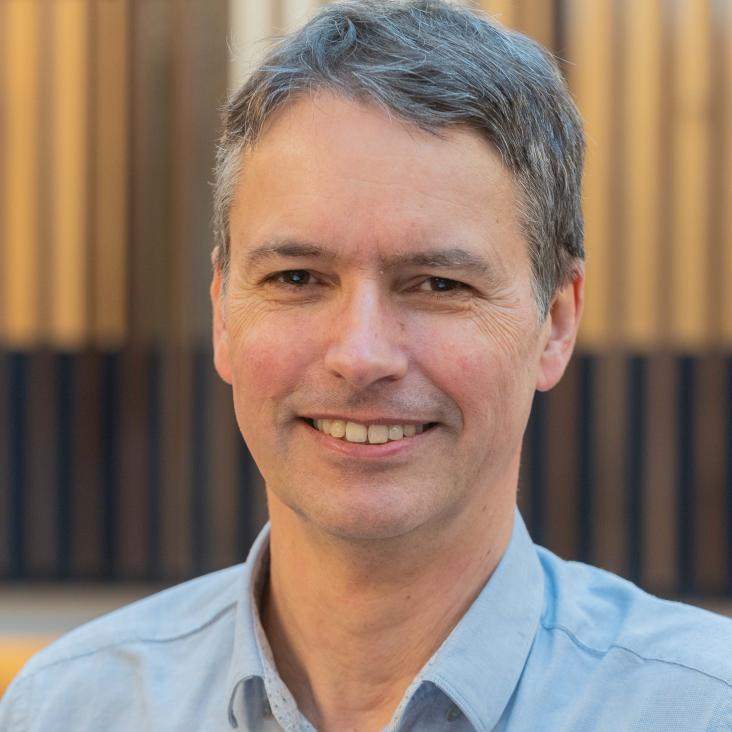Exploring the Masses of the Two Most Distant Gravitational Lensing Clusters at Cosmic Noon
The Astrophysical Journal American Astronomical Society 991:1 (2025) 109
Abstract:
Observations over the past decade have shown that galaxy clusters undergo the most transformative changes during the z = 1.5–2 epoch. However, challenges such as low lensing efficiency, high shape measurement uncertainty, and a scarcity of background galaxies have prevented us from characterizing their masses with weak gravitational lensing (WL) beyond redshift z ∼ 1.75. In this paper, we report the successful WL detection of JKCS 041 and XLSSC 122 at z = 1.80 and z = 1.98, respectively, utilizing deep infrared imaging data from the Hubble Space Telescope with careful removal of instrumental effects. These are the most distant clusters ever measured through WL. The mass peaks of JKCS 041 and XLSSC 122, which coincide with the X-ray peak positions of the respective clusters, are detected at the ∼3.7σ and ∼3.2σ levels, respectively. Assuming a single spherical Navarro–Frenk–White profile, we estimate that JKCS 041 has a virial mass of M200c = (5.4 ± 1.6) × 1014 M⊙, while the mass of XLSSC 122 is determined to be M200c = (3.3 ± 1.8) × 1014 M⊙. These WL masses are consistent with the estimates inferred from their X-ray observations. We conclude that although the probability of finding such massive clusters at their redshifts is certainly low, their masses can still be accommodated within the current ΛCDM paradigm.Euclid
Astronomy & Astrophysics EDP Sciences 697 (2025) ARTN A2
Abstract:
This paper presents the specification, design, and development of the Visible Camera (VIS) on the European Space Agency’s Euclid mission. VIS is a large optical-band imager with a field of view of 0.54 deg2 sampled at 000 . 1 with an array of 609 Megapixels and a spatial resolution of 000 . 18. It will be used to survey approximately 14 000 deg2 of extragalactic sky to measure the distortion of galaxies in the redshift range z = 0.1–1.5 resulting from weak gravitational lensing, one of the two principal cosmology probes leveraged by Euclid. With photometric redshifts, the distribution of dark matter can be mapped in three dimensions, and the extent to which this has changed with look-back time can be used to constrain the nature of dark energy and theories of gravity. The entire VIS focal plane will be transmitted to provide the largest images of the Universe from space to date, specified to reach mAB ≥ 24.5 with a signal-to-noise ratio S/N ≥ 10 in a single broad IE ≃ (r + i + z) band over a six-year survey. The particularly challenging aspects of the instrument are the control and calibration of observational biases, which lead to stringent performance requirements and calibration regimes. With its combination of spatial resolution, calibration knowledge, depth, and area covering most of the extra-Galactic sky, VIS will also provide a legacy data set for many other fields. This paper discusses the rationale behind the conception of VIS and describes the instrument design and development, before reporting the prelaunch performance derived from ground calibrations and brief results from the in-orbit commissioning. VIS should reach fainter than mAB = 25 with S/N ≥ 10 for galaxies with a full width at half maximum of 000 . 3 in a 100 . 3 diameter aperture over the Wide Survey, and mAB ≥ 26.4 for a Deep Survey that will cover more than 50 deg2. The paper also describes how the instrument works with the Euclid telescope and survey, and with the science data processing, to extract the cosmological information.Euclid
Astronomy & Astrophysics EDP Sciences 697 (2025) ARTN A5
Abstract:
We present the Flagship galaxy mock, a simulated catalogue of billions of galaxies designed to support the scientific exploitation of the Euclid mission. Euclid is a medium-class mission of the European Space Agency optimised to determine the properties of dark matter and dark energy on the largest scales of the Universe. It probes structure formation over more than 10 billion years primarily from the combination of weak gravitational lensing and galaxy clustering data. The breadth of Euclid’s data will also foster a wide variety of scientific analyses. The Flagship simulation was developed to provide a realistic approximation to the galaxies that will be observed by Euclid and used in its scientific exploitation. We ran a state-of-the-art N-body simulation with four trillion particles, producing a lightcone on the fly. From the dark matter particles, we produced a catalogue of 16 billion haloes in one octant of the sky in the lightcone up to redshift z = 3. We then populated these haloes with mock galaxies using a halo occupation distribution and abundance-matching approach, calibrating the free parameters of the galaxy mock against observed correlations and other basic galaxy properties. Modelled galaxy properties include luminosity and flux in several bands, redshifts, positions and velocities, spectral energy distributions, shapes and sizes, stellar masses, star formation rates, metallicities, emission line fluxes, and lensing properties. We selected a final sample of 3.4 billion galaxies with a magnitude cut of HE < 26, where we are complete. We have performed a comprehensive set of validation tests to check the similarity to observational data and theoretical models. In particular, our catalogue is able to closely reproduce the main characteristics of the weak lensing and galaxy clustering samples to be used in the mission main cosmological analysis. Moreover, given its depth and completeness, this new galaxy mock also provides the community with a powerful tool for developing a wide range of scientific analyses beyond the Euclid mission.Euclid preparation
Astronomy & Astrophysics EDP Sciences 691 (2024) a319
The Euclid mission: status after launch and early operations
Proceedings of SPIE--the International Society for Optical Engineering SPIE, the international society for optics and photonics 13092 (2024) 130920m-130920m-16


